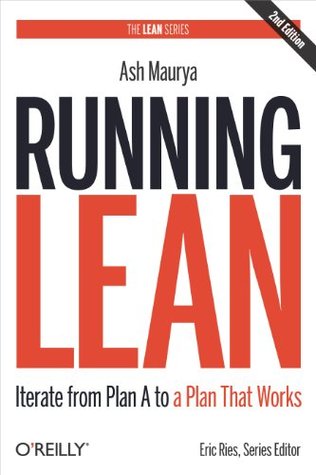More on this book
Community
Kindle Notes & Highlights
by
Ash Maurya
Read between
December 6, 2022 - January 9, 2023
The activation flow is a subfunnel made up of the steps shown in Figure 9-3. Figure 9-3. Activation flow
Reduce signup friction, but not at the expense of learning.
Reduce the number of steps, but not at the expense of learning.
Acquisition describes the path a customer takes from first landing on your website as an unaware visitor to becoming an interested prospect.
Figure 9-5. Acquisition subfunnel
Figure 9-6. Landing page elements
It’s not what you measure, but how.
The three A’s of metrics are: Actionable, Accessible, and Auditable. — Eric Ries
For starters, you have to be able to go to the people behind the numbers. The ideal conversion dashboard is part analytics and part customer relationship management.
Metrics can’t explain themselves. When you first launch a product or new feature, lots of things can and do go wrong. Metrics can help you identify where things are going wrong, but they can’t tell you why. You need to talk to people for that.
So, while funnels are a great visualization tool, funnels alone are not enough. The answer is to couple funnels with cohorts.
Cohort analysis is very popular in medicine, where it is used to study the long-term effects of drugs and vaccines:
Watching usability tests is like travel: it’s a broadening experience. — Steve Krug, Rocket Surgery Made Easy (New Riders Press)
A common technique used by email marketers is drip marketing, where you schedule a set of predetermined messages to your users over time. Even interested users get busy and distracted, and gentle reminders can help bring them back to your product.
But even better than drip marketing is lifecycle marketing. Lifecycle marketing additionally considers the user’s stage in the customer lifecycle. So, for instance, if a user gets stuck during activation, instead of educating him about your advanced features, you would know to send him timely and appropriate troubleshooting help.
Put down the compiler until you learn why they’re not buying. — Jason Cohen, A Smart Bear blog
Start With No. — 37signals, Getting Real
Feature creep can become an addiction. — Ben Yoskovitz, Instigator blog
Before going further, it is important to distinguish between minimal marketable features (MMFs) and smaller features/bug fixes. MMF was first defined in the book Software by Numbers by Mark Denne and Jane Cleland-Huang (Prentice Hall) as the smallest portion of work that provides value to customers.
I only track MMFs on a Kanban board and use a lighter-weight task board tool (like Pivotal Tracker) to track smaller features, bug fixes, and work items.
Process Feature Requests In this section, I’ll outline a Getting Things Done (GTD) style workflow for how to process new work requests that will inevitably come up (see Figure 13-4).
I do recommend split-testing experiments that got a medium to strong signal during qualitative testing and those that test improvements or alternate flows.
Figure 14-1. Focusing on the right macro
You have early traction when you are retaining 40% of your activated users, month after month.
While revenue is the first form of validation, retention is the ultimate form of validation.
Focusing on scaling your business before you can demonstrate early traction is a form of waste.
The engine of growth is the mechanism that startups use to achieve sustainable growth. — Eric Ries, The Lean Startup (Crown Business)
Churn rate is the fraction of customers who leave or fail to remain engaged with a product after a given time period. Growth here is driven by keeping Customer Acquisition Rate > Churn Rate.
Viral coefficient measures the number of converted referrals per customer. Growth here is driven by keeping the Viral Coefficient > 1 (i.e., each user brings in at least one other user).
A product that uses the paid engine of growth relies on reinvesting a portion of customer revenues (lifetime value or LTV) toward customer acquisition activities like buying advertising or hiring sales people. Growth here is driven by keeping customer lifetime value (LTV) > cost of customer acquisition (COCA). A good rule of thumb by way of David Skok, Matrix Partners, is to keep LTV > 3 * COCA.
The amount of serendipity that will occur in your life, your Luck Surface Area, is directly proportional to the degree to which you do something you’re passionate about combined with the total number of people to whom this is effectively communicated. — Jason Roberts, “How to Increase Your Luck Surface Area”
Summary Figure 14-2 captures the workflow we’ve followed throughout this book. Figure 14-2. The Running Lean methodology
I believe that the life of any startup can be divided into two parts: before product/market fit (call this “BPMF”) and after product/market fit (“APMF”). — Marc Andreessen, “The Pmarca Guide to Startups”
Figure 15-1. After product/market fit
A book, like large software, is never finished — only released.
Without validation, you have no leverage. More important, without validation, you don’t have product/market credibility, which typically comes at a price — reflected in lower valuations and investor-favored term sheets.
Money is an accelerant, not a silver bullet. It lets you do more of what you’re currently doing, but not necessarily do it better. For instance, more money might tempt you to hire more people and build more features — both of which may lead you off course and slow you down. Constraints drive innovation, but more important, they force action. With less money, you are forced to build less, get it out faster, and learn faster.
Managers typically organize their day into one-hour blocks, and spend each hour dealing with a different task. Makers, like programmers and writers, need to organize their day into longer blocks of uninterrupted time. The cost of context switching is low (and expected) in a manager’s schedule. It is high (and a productivity killer) in a maker’s schedule.


